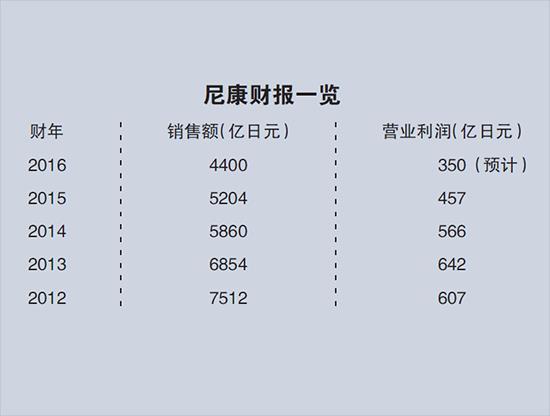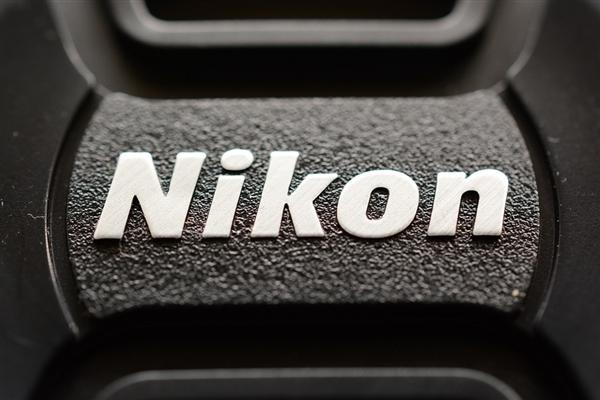In response to news that 1,000 jobs will be laid off in Japan, Nikon officials denied it on November 8. However, Nikon’s acquisition of Sharp as a result of a sharp decline in profits, or its acquisition as the next Sharp’s remarks, is widely circulated in the industry. According to Nikon’s latest March-September financial report, operating profit dropped by 41% to 21.9 billion yen, and Nikon’s sales of SLR cameras this year were revised from 6.5 million units to 6.2 million units, and digital SLR sales further declined. Analysis of industry experts pointed out that with SLR less than Canon, micro-single than Sony, Nikon has a century-old history in the camera market is now supporting the evolution.
Denied thousands of layoffs
Although Nikon has repeatedly denied the layoff of thousands of people in Japan, in fact, Nikon is still implementing relevant measures, only to redeployment and voluntary retirement.
According to Nikon's “Restructuring Announcement†in the financial statements on November 8th, the current medium-term business plan will be suspended and a structural reform period of approximately two and a half years will be set. The goal is to cut 20 billion yen (approximately 190 million yen). (USD) fixed fee.
In order to achieve fixed-cost reductions, the 1,550 employees of Nikon Japan will be redeployed, including 200 in the group headquarters, 1,000 in the semiconductor lithography business, and 350 in the imaging product business. At the same time, Nikon announced a voluntary retirement plan for about 1,000 employees, which is equivalent to 10% of the total number of employees in Japan. If successful, by March 31, 2017, the total number of people will be reduced by 1,000.
Industry experts pointed out that although Nikon emphasizes redeployment of resources, reduction of semiconductor manufacturing equipment business and camera business personnel, and the promotion of other new growth areas, it is often difficult for employees to adapt to and perform new jobs. I am afraid that the road to voluntary retirement is, from the results, it is no different from layoffs.
Staff adjustment is inextricably linked with Nikon's business conditions. The data shows that from March to September this year, Nikon’s operating profit dropped by 41% to 21.9 billion yen (2.22 billion US dollars). Nikon’s explanation is that people’s demand for SLR is still low. . From a sales perspective, Nikon’s SLR camera sales this year are expected to fall from 6.5 million units to 6.2 million units.
This is not Nikon's first layoff. As early as 2009, Nikon said it will restructure its semiconductor-related components business to save 17 billion yen in fixed costs over the next three years. As part of the cost-saving plan, Nikon has integrated four semiconductor-related equipment factories into two, and will also reduce the size of its Singapore branch and transfer some of the divisions to Taiwan. Under the restructuring plan, Nikon cut about 1,000 full-time employees and contract workers.
Business decline
The decline in Nikon's camera business is also related to the market environment. According to statistics from the Japan International Association of Cameras and Imaging Equipment Industry, global digital camera sales peaked in 2010, and then began to decline year after year. In 2014, the overall digital camera market sales even slightly lower than the level in 2000, 2016 The sales for the first six months were almost half of the monthly figures for 2014.
Not just Nikon, including Canon, Fuji, Sony and other big video giants are quite difficult. Data show that Fuji Xerox’s revenue in the first quarter fell by 11.5% year-on-year, operating profit decreased by 28.5% year-on-year; Canon’s image business’s revenue decreased by 13.5% in the second quarter of 2016; Sony’s revenue for the previous quarter was 1,688.9 billion yen. Yuan, which fell 10.8% over the same period of last year, operating profit fell 48% year-on-year. However, Nikon’s profits fell more than any other company. Looking at Nikon’s financial reports over the years, it has found that Nikon’s sales have declined for three consecutive fiscal years, and revenues have also declined for two consecutive fiscal years. In fiscal year 2012-2015, Nikon’s sales were 751.2 billion yen, 685.4 billion yen, 586 billion yen, 520.4 billion yen, and operating profits were 60.7 billion yen, 64.2 billion yen, 56.6 billion yen, respectively. 45.7 billion yen.
More severely, this downward trend is further deteriorating. Nikon Corporation expects sales in fiscal year 2016 (April 2016-March 2017) to be 440 billion yen (approximately 28.4 billion yuan), a year-on-year decrease of 15.45. %, operating profit was 35 billion yen, down 23.41% year-on-year.
The decline in performance was mainly affected by the semiconductor manufacturing device business and the camera business. According to home appliance analyst Liang Zhenpeng, as of the 90s of the last century, Nikon had topped the global market share in the semiconductor manufacturing equipment business that assembles a large number of optical technologies. However, in recent years, the Dutch ASML has taken market share and the business continues to suffer losses. In addition, with the rise of smart phones, the digital camera market is also shrinking.
The declining operating conditions of the company also triggered Sony's desire to buy Nikon. In this regard, industrial watcher Hong Shibin pointed out that the rise of micro-single has enabled Sony to occupy a place in the camera field. However, in the area of ​​SLR, Sony has a large gap with Canon and Nikon. SLR has always been a heart disease for Sony. As Nikon continues to decline, This acquisition may be feasible.

Deadly quality control
In order to reverse the decline in the performance of the company, Nikon has also been continuously looking for new business growth in recent years. Previously, Nikon acquired Optos, a UK manufacturer of retinal imaging diagnostic instruments, and plans to integrate its own image processing technology with Optos' products and technologies to develop high-precision diagnostic equipment. This year, in addition to normal SLR camera updates, Nikon also began to try to enter the field of panoramic VR, extreme sports camera, and launched the panoramic camera KeyMission 360.
Nikon’s global marketing manager recently stated that Nikon may expand its business in the areas of motion cameras, wearables, and drones in the future.
Hong Shibin believes that in fact, Nikon's decline in performance is not entirely due to the downturn in the original business market. The more reason is that in the past few years, the SLR market was inferior to Canon, and the micro-single market was inferior to Sony, leading to gradually becoming a supporting role in the market. Beijing Business Daily reporter found through the Jingdong platform comparison, in the sales of the top ten SLR cameras, Canon occupies 8 models, Nikon only 2 models, and the top six sales are Canon, 2 Nikon, respectively, ranked seventh and tenth . The micro-unilateral, sales of the top ten, Sony 7 products on the list, Canon 2, Fuji 1, did not see Nikon figure.
According to Kuang Nan, a researcher in the technology market, Nikon’s biggest problem lies in its quality control problems. The D600’s entry into the grey door preceded the shutter of the D750. After Nikon moved the consumer-grade camera factory to Thailand, quality problems frequently occurred, causing the market reputation to suffer serious setbacks.
As early as 2014, CCTV “3?5 party†was exposed Nikon SLR D600 “black spot doorâ€, and then D600 camera was asked to take off nationwide. Out of quality issues, Nikon’s problems were not handled well. It is understood that in the United States, consumers can directly replace the new models for free; some European users to Diffuse the D600 camera into the service station after the dust received a new D610 camera; in France, D600 into the gray The cost of the new D610 only requires a small fee; however, in China, users suffering from D600's ash failure have not been able to enjoy such treatment. This has also caused Nikon’s accumulated brand reputation to be severely damaged over the years.
Then in July 2015, Nikon announced that some shutters of Nikon D750 SLR cameras produced during October-November 2014 were not working properly, and occasionally caused shadows in some areas of the image. Earlier this year, Nikon China officially issued an announcement again adding the scope of the D750 digital SLR camera that may not function properly with the shutter assembly. The D750 camera produced from December 2014 to June 2015 will also exhibit this phenomenon. Said that this part will be shutter free repair service.
According to a research report released by ZDC on the digital camera market in the first half of 2016, the number of digital camera brands in the first half of the year, Canon was as high as 39.7%, ranking first, Nikon 25%, ranking second, Sony 13.2%, ranking first three. Hong Shibin believes that in the face of falling overall demand and falling profits, Nikon’s choice of future business transformation will be crucial. Nikon’s accumulation in optical technology will enable it to remain competitive in the high-end photographic equipment industry. This is a transition for Nikon. Provide a certain amount of protection, more urgently is to deal with product quality problems.
In 1917, the Department of Optical Metrology Instruments of Tokyo Keiki Seisakusho Co., Ltd. merged with the mirror department of Iwaki Glass Co., Ltd. to become a more complete optical company. It was named Nippon Kogaku KK. This is Nikon’s original company and has since opened a century of Nikon. The road to development. For Nikon, it is now in a critical period of transition. Balancing the development of new and old businesses has become the key, otherwise it is possible to repeat the mistakes of Sharp's acquisition.

[This article comes from the Tencent News client from the media, does not represent the views and positions of Tencent News. 】
ATS22 is designed for most infrastructure and industrial applications for better in-class protection function and ease of use.
Schneider Inverter Drive,Variable Frequency Drive,High Frequency Converter,Frequency Inverter For Motor
Wuxi Trenty Machinery & Equipment Co., Ltd. , https://www.elec-inverter.com
